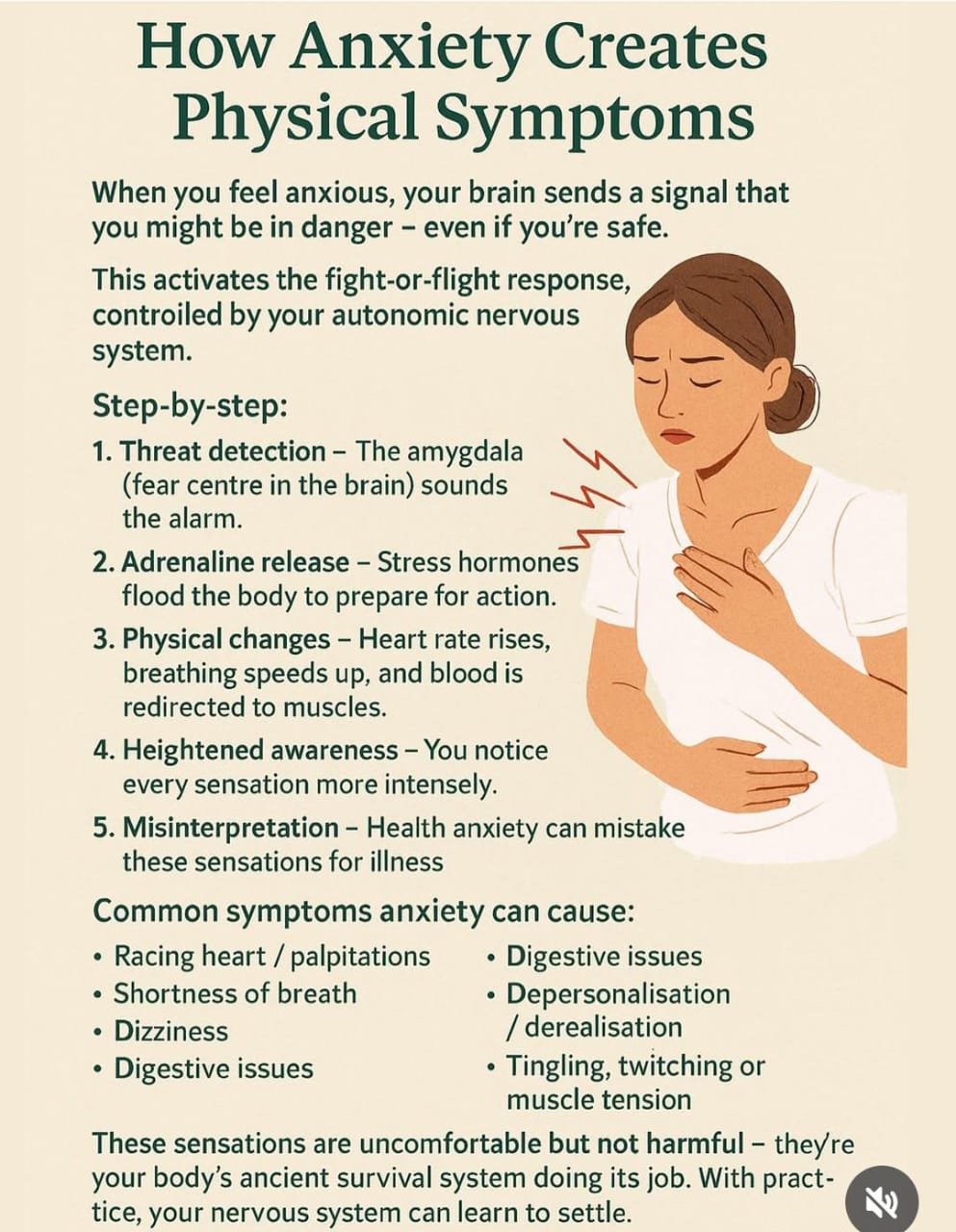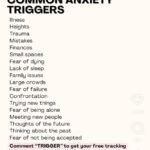How Anxiety Creates Physical Symptoms
When you feel anxious, your brain sends a signal that you might be in danger – even if you’re safe.
This activates the fight-or-flight response, controiled by your autonomic nervous system.
Step-by-step:
1. Threat detection – The amygdala (fear centre in the brain) sounds the alarm.
2. Adrenaline release – Stress hormones flood the body to prepare for action.
3. Physical changes – Heart rate rises, breathing speeds up, and blood is redirected to muscles.
4. Heightened awareness – You notice every sensation more intensely.
5. Misinterpretation – Health anxiety can mistake these sensations for illness
Common symptoms anxiety can cause:
Racing heart / palpitations
Digestive issues
Shortness of breath
Depersonalisation / derealisation
Digestive issues
Tingling, twitching or muscle tension
These sensations are uncomfortable but not harmful – they’re your body’s ancient survival system doing its job. With pract-tice, your nervous system can learn to settle.
Your body isn’t broken – it’s responding to a false alarm.
When you live with health anxiety, everyday sensations can feel genuinely terrifying.
A flutter in your chest… a wave of dizziness… a strange tingle – and suddenly your mind is racing to the worsttttttt case scenario.
But here’s the truth:
These feelings are often the result of your fight-or-flight system doing exactly what it was designed to do. Anxiety tells your brain there’s danger, and your body reacts completely safe. even when you’re
Understanding why these symptoms happen is a powerful first step in breaking the cycle of fear. How Anxiety Creates Physical Symptoms
Have you noticed certain symptoms show up more when you’re anxious?
Save this post as a reminder that uncomfortable doesn’t mean unsafe.



